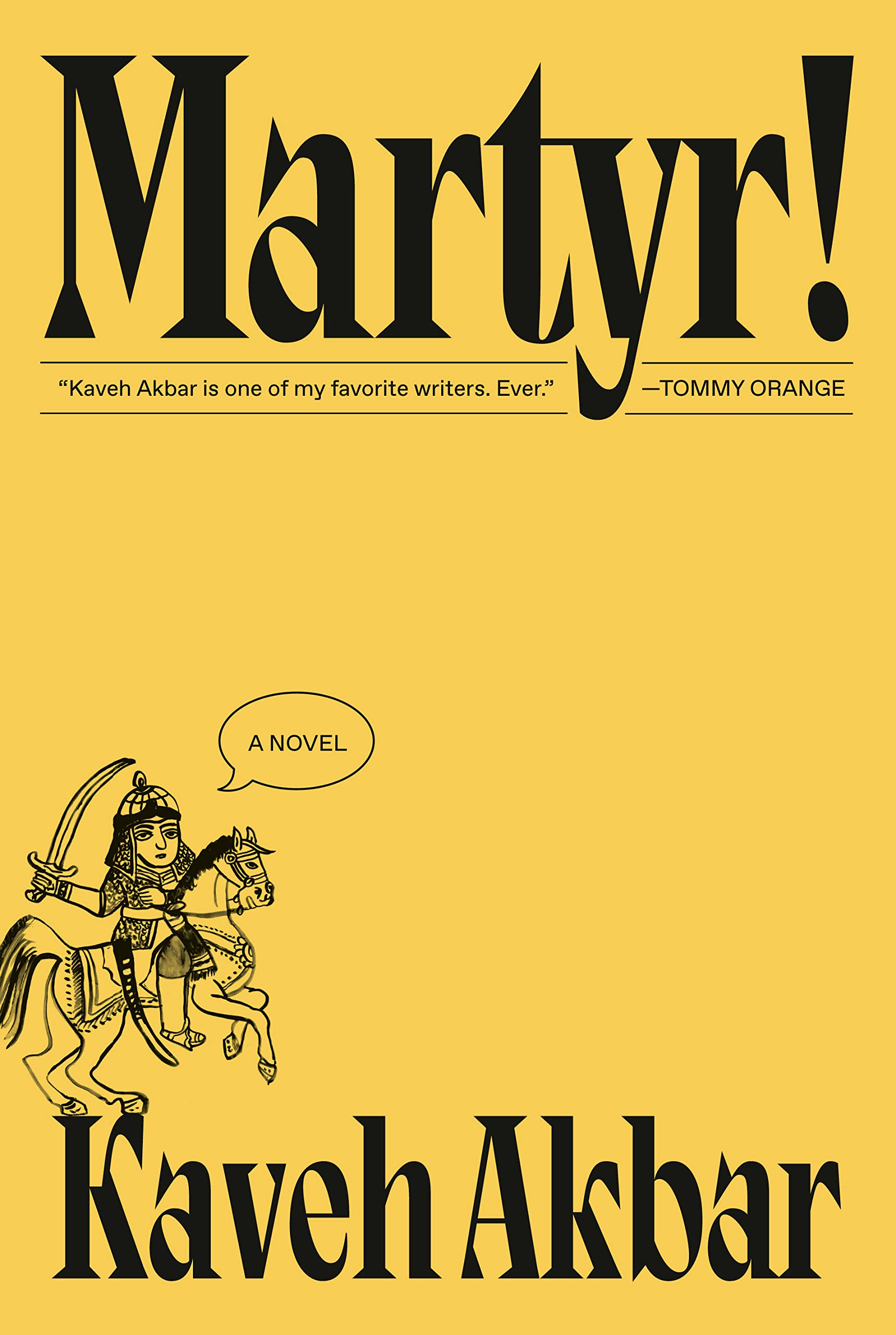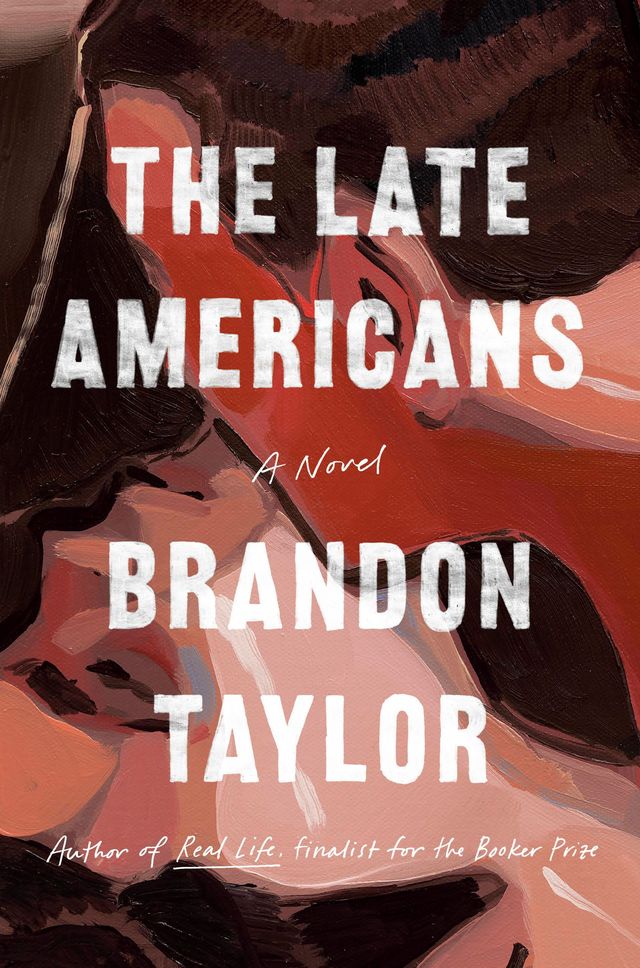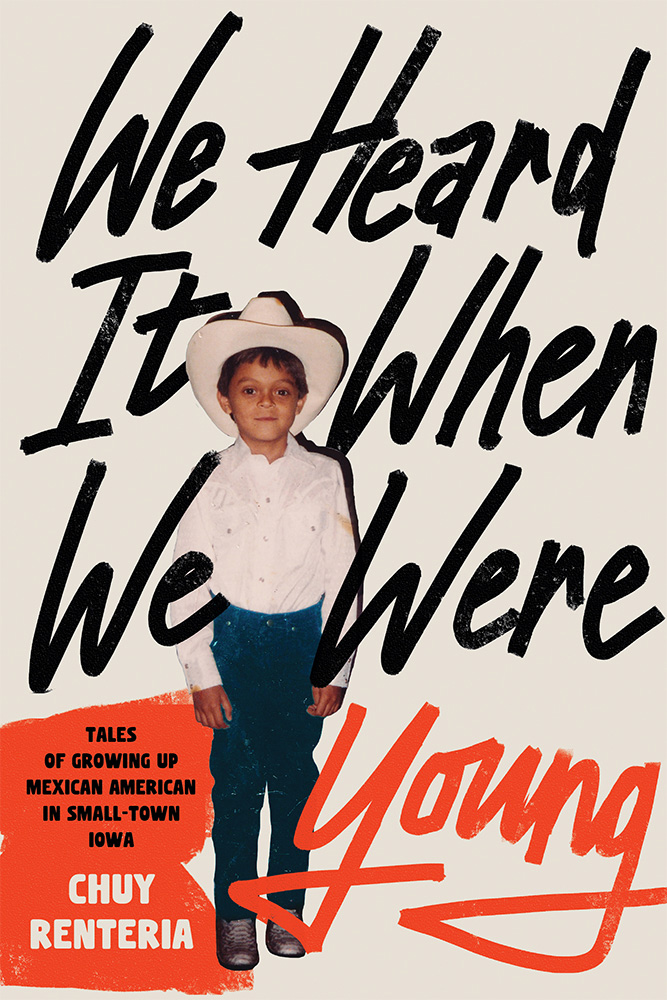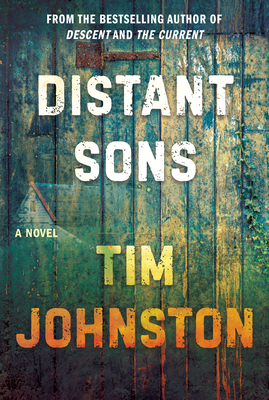Reading suggestions
Here you can find ever changing lists compiled by your librarian ranging in themes, age groups, and more. Most of these titles will be available physically at the library for check out, but some may be available only via Libby (our digital collection), which will be stated under the title. Click on the title or cover of the book to be taken to our catalogue to place a hold on a book that peaks your interest.
Make sure you check in often for new lists or if you're feeling stuck, check out our Book Bundle service for personalized recommendations!
10 Books by Iowa Authors You Should Read in 2025:
Has anyone noticed that when you Google "Iowa authors" a majority of links send you to lists of books from 15 years ago? We thought we'd revamp those lists with some recent releases on our shelves from authors who currently live in Iowa, went to University of Iowa, and even some you could pass on the street!
Find your next great read the local way with these 10 books by Iowa authors:
Fiction
 1. Pas de Don't by Chloe Angyal
1. Pas de Don't by Chloe Angyal
Heather Hays finally has everything she's worked for—she was promoted principal dancer and is engaged to her forever crush, ballet royalty Jack Andersen. But after Jack is caught cheating, Heather's near-perfect life comes crashing down. Determined to prove that she rose to the top on her own merits, she accepts a guest position from the only company that will hire her without the Australian National Ballet.
There she meets Marcus Campbell, who has had the most hellish year imaginable. When he shredded his Achilles tendon onstage, he lost every chance of his dad seeing him perform before he passed away. Marcus has spent the months since in physical therapy, worrying he'll be too old to dance by the time he's fully recovered. Now he's supposed to play tour guide for the company's new arrival.
But as they tour Sydney together, Heather and Marcus discover an immediate mutual attraction—one they absolutely cannot act on. ANB has a strict no-dating policy, and even a hint of romance could cost them both their jobs.
Still, Heather has followed the rules her whole life . . . maybe it's time to break one.
2. Don't Forget the Girl by Rebecca McKanna
We never remember the dead girls. We never forget the killers.
Twelve years ago, 18-year-old University of Iowa freshman Abby Hartmann disappeared. Now, Jon Allan Blue, the serial killer suspected of her murder, is about to be executed. Abby's best friends, Bree and Chelsea, watch as Abby's memory is unearthed and overshadowed by Blue and his flashier crimes. The friends, estranged in the wake of Abby's disappearance, and suffering from years of unvoiced resentments, must reunite when a high-profile podcast dedicates its next season to Blue's murders.
Tense and introspective, for readers of Megan Goldin and Heather Gudenkauf, Don’t Forget the Girl is an astonishing debut thriller that mines the complexities of friendship and the secrets between us that we may take to the grave.
 3. The Shore by Katie Runde
3. The Shore by Katie Runde
Brian and Margot Dunne live year-round in Seaside, just steps away from the bustling boardwalk, with their daughters Liz and Evy. The Dunnes run a real estate company, making their living by quickly turning over rental houses for tourists. But the family’s future becomes precarious when Brian develops a brain tumor, transforming into an erratic version of himself. Amidst the chaos and new caretaking responsibilities, Liz still seeks out summer adventure and flirting with a guy she should know better than to pursue. Her younger sister Evy works in a candy shop, falls in love with her friend Olivia, and secretly adopts the persona of a middle-aged mom in an online support group, where she discovers her own mother’s vulnerable confessions. Meanwhile, Margot faces an impossible choice driven by grief, impulse, and the ways that small-town life has shaped her. Falling apart is not an option, but she can always pack up and leave the beach behind.
“An emotional family drama...with endearing characters and deep insights” ( Glamour ), The Shore is a heartbreaking yet ultimately uplifting novel infused with humor about finding sisterhood, friendship, and love in a time of crisis. This big-hearted novel examines the grit and hustle of running a small business in a tourist town, the ways we connect with strangers when our families can’t give us everything we need, and the comfort found in embracing the pleasures of youth while coping with unimaginable loss.
4. Distant Sons by Tim Johnston
By the New York Times bestselling author of Descent and The Current, an absorbing new work of literary suspense about two young working men who forge a friendship despite secrets in their past, and whose actions ignite the passions and violence of a small Wisconsin town still haunted by the unsolved disappearance of three boys in the 1970s. For readers of Peter Heller, Liz Moore, and Cormac McCarthy.
What if?
What if Sean Courtland’s old Chevy truck had broken down somewhere else? What if he’d never met Denise Givens, a waitress at a local tavern in the Wisconsin town where he lands? Or Dan Young, another young man like Sean drifting through, having fled Minnesota for reasons unknown? Instead, together Sean and Dan pick up carpentry and plumbing work for an old man named Marion Devereaux, and Sean gets drawn into the lives of Denise and her father—and of the townspeople, all haunted by the disappearance of three young boys decades ago, in the 1970s.
As the paths of these characters converge, observing them all is Detective Corinne Viegas, a woman whose drive to seek justice comes from her father's own failure to find those boys and the violence once done to her sister. And over the course of just a few weeks, an irreversible chain of events is set in motion that culminates in shattering violence, and the revelation of long-buried truths.
Evocative, gritty, with indelible characters and setting, Distant Sons is another immersive, gripping suspense novel by Johnston about how the most random intersection of lives can have consequences both devastating and beautiful.
 5. Martyr! by Kaveh Akbar
5. Martyr! by Kaveh Akbar
Kaveh Akbar’s Martyr! is a paean to how we spend our lives seeking meaning—in faith, art, ourselves, others—in which a newly sober, orphaned son of Iranian immigrants, guided by the voices of artists, poets, and kings, embarks on a search that leads him to a terminally ill painter living out her final days in the Brooklyn Museum.
Cyrus Shams is a young man grappling with an inheritance of violence and loss: his mother’s plane was shot down over the skies of Tehran in a senseless accident; and his father’s life in America was circumscribed by his work killing chickens at a factory farm in the Midwest. Cyrus is a drunk, an addict, and a poet, whose obsession with martyrs leads him to examine the mysteries of his past—toward an uncle who rode through Iranian battlefields dressed as the Angel of death to inspire and comfort the dying, and toward his mother, through a painting discovered in a Brooklyn art gallery that suggests she may not have been who or what she seemed.
Electrifying, funny, wholly original, and profound, Martyr! heralds the arrival of a blazing and essential new voice in contemporary fiction.
 6. The Late Americans by Brandon Taylor
6. The Late Americans by Brandon Taylor
A deeply involving new novel of young men and women at a crossroads
In the shared and private spaces of Iowa City, a loose circle of lovers and friends encounter, confront, and provoke one another in a volatile year of self-discovery. At the group’s center are Ivan, a dancer turned aspiring banker who dabbles in amateur pornography; Fatima, whose independence and work ethic complicates her relationships with friends and a trusted mentor; and Noah, who “didn’t seek sex out so much as it came up to him like an anxious dog in need of affection.” These three are buffeted by a cast of poets, artists, landlords, meat-packing workers, and mathematicians who populate the cafes, classrooms, and food-service kitchens of Iowa City, sometimes to violent and electrifying consequence. Finally, as each prepares for an uncertain future, the group heads to a cabin to bid goodbye to their former lives—a moment of reckoning that leaves each of them irrevocably altered.
Nonfiction
 7. Birds in the Morning, Frogs at Night: Sharing Life Along the Road by Maureen McCue
7. Birds in the Morning, Frogs at Night: Sharing Life Along the Road by Maureen McCue
"McCue makes the persuasive and poetic case that rural life might be one answer to the environmental ills brought by our consumptive, thoughtless and relentlessly destructive society. While Iowa is not known for its nature writing, McCue's lovely book might change that!" --Carolyn Raffensperger, Executive Director of the Science and Environmental Health Network.
 8. Soil: The Story of a Black Mother's Garden by Camille T. Dungy
8. Soil: The Story of a Black Mother's Garden by Camille T. Dungy
A seminal work that expands how we talk about the natural world and the environment as National Book Critics Circle Criticism finalist Camille T. Dungy diversifies her garden to reflect her heritage.
In Soil: The Story of a Black Mother's Garden, poet and scholar Camille T. Dungy recounts the seven-year odyssey to diversify her garden in the predominately white community of Fort Collins, Colorado. When she moved there in 2013 with her husband and daughter, the community held strict restrictions about what residents could and could not plant.
In resistance to the homogeneous policies that limited the possibility and wonder that grows from the earth, Dungy employs the various plants, herbs, vegetables, and flowers she grows in her garden as metaphor and treatise for how homogeneity threatens the future of the planet, and why cultivating diverse and intersectional language in our national discourse about the environment is the best means of protecting it.
Definitive and singular, Soil functions at the nexus of nature writing, environmental justice, and prose to encourage readers to recognize the relationship between the peoples of the African diaspora and the land on which they live, and to understand that wherever soil rests beneath their feet is home.
 9. The Indian Card: Who Gets to Be Native in America by Carrie Schuettpelz
9. The Indian Card: Who Gets to Be Native in America by Carrie Schuettpelz
A groundbreaking exploration of Native American identity, tribal enrollment, ancestry, and what all of this reveals about our understandings of race and politics.
The number of people in the United States who self-identify as Native has exploded in the last two decades. In the 2020 Census, more than twice as many people checked the box for “American Indian or Alaska Native” than in 2000. Sure, there have been improvements to the ways that we are able to identify race in this once-a-decade survey, and there have been efforts to reduce the undercount of people living on reservations. But it’s clear that some people are lying, some people are wrong, and many are caught in a growing chasm between self-identity and verification.The concept of having evidence to determine your tribal identity through measurable, objective means, is somewhat unique to Native Americans who, unlike any other racial or ethnic group in the United States, undergo bureaucratic processes to prove themselves. Every tribe is different – some trace lineage, others consult historic rolls, and some calculate blood quantum. Having a card to confirm your tribal enrollment is not synonymous with being Native, and yet it offers a way to validate something intangible.
In The Indian Card, Carrie Schuettpelz dives deep into the idiosyncrasy and the often violent history of the ways that Native people establish an identity that is cultural, racial, and political all at once. How do blood, land, money, integrity, and tradition define tribal citizenship? How was kinship determined before colonization? And what would it look like to define community for ourselves?
 10. We Heard It When We Were Young by Chuy Renteria
10. We Heard It When We Were Young by Chuy Renteria
Most agree that West Liberty is a special place. The first majority Hispanic town in Iowa, it has been covered by media giants such as Reuters, Telemundo, NBC, and ESPN. But Chuy Renteria and his friends grew up in the space between these news stories, where a more complicated West Liberty awaits. We Heard It When We Were Young tells the story of a young boy, first-generation Mexican American, who is torn between between immigrant parents trying to acclimate to midwestern life and a town that is, by turns, supportive and disturbingly antagonistic.
Renteria looks past the public celebrations of diversity to dive into the private tensions of a community reflecting the changing American landscape. There are culture clashes, breakdancing battles, fistfights, quinceañeras , vandalism, adventures on bicycles, and souped-up lowriders, all set to an early 2000s soundtrack. Renteria and his friends struggle to find their identities and reckon with intergenerational trauma and racism in a town trying to do the same. A humorous and poignant reflection on coming of age, We Heard It When We Were Young puts its finger on a particular cultural moment at the turn of the millennium.
